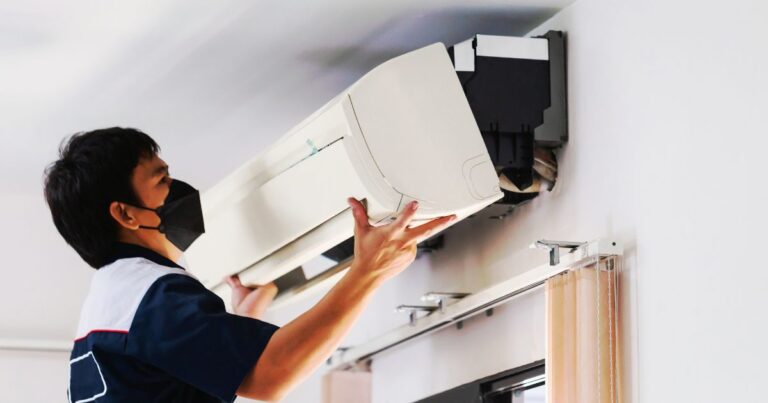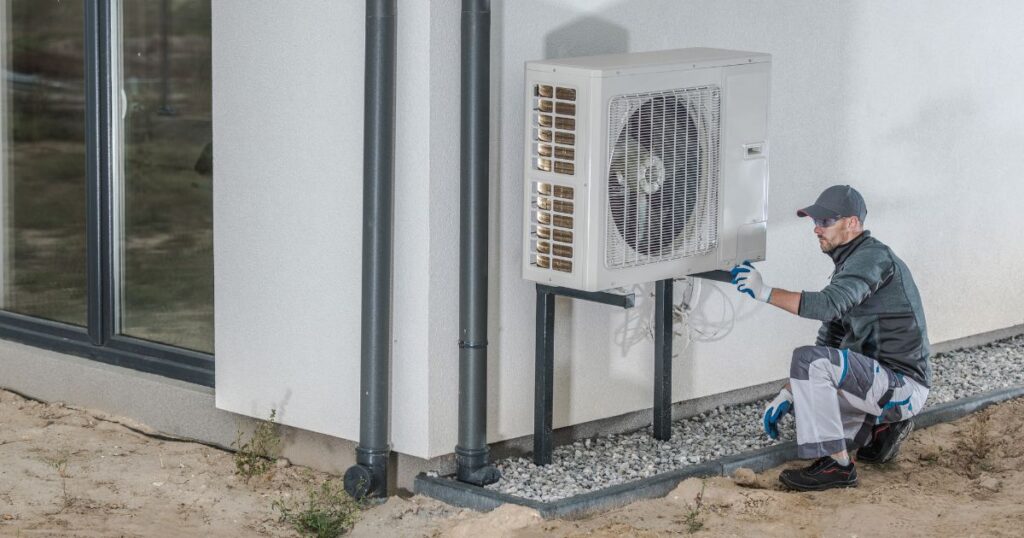
Table of Contents
ToggleThere’s nothing better than a cool breeze from your AC unit in summer or the toasty warmth from your heating system in winter – until it breaks down (usually in the middle of the hottest or coldest week of the year!) Here are 5 steps to take if your home heating or cooling system suddenly stops working.
Some heating and cooling systems are quite sensitive to power levels from your mains, and an outage combined with the surge of electricity when the power comes back on can cause the system to trip the circuit breaker. If the switch on your board is down, simply flip it back up and see if the system comes back online. If not, then it’s worth calling out a specialist, as there may be electrical damage from the power surge.
The most common reason for a heating or cooling system to suddenly stop working is because the air filters are dirty. When these get clogged up with dust, pollen and other airborne particles, it becomes very difficult for the system to pull air in. This forces it to work much harder for much longer and, eventually, it will overheat. If it overheats too often, it will break down completely rather than shutting down until the system is cool enough to restart.
This is a serious problem that can permanently damage your system, but there’s an easy enough solution! Simply get out your manual and follow the manufacturer’s instructions for cleaning or replacing the air filters. You can also have this messy job done by heating and cooling specialists who will service the whole system at the same time.
The thermostat measures the ambient air temperature of the room and tells the system when it needs to turn on and off to reach the set temperature. So, if it stops working, you’ll find that the system is shutting off prematurely, cycling on and off too often, or just not getting the room to the right temperature.
Check the settings and make sure that they are correct (accidents happen!), change the batteries if it is a separate unit, restart it to reboot the system, or get a specialist out to replace or repair it.
Heating and cooling systems use refrigerant to move the heat it takes out of the building to the outdoors in summer, and to move the heated air into the building during winter. The level of this fluid tends to drop over time, especially if the system is older and the pipes have sprung a leak.
Rather than just adding more refrigerant, it’s best to call in a heating and cooling repair team who can find the leak and repair it well, so you don’t end up having to refill your system constantly and run the risk of it overheating and breaking down for good.

If these basic troubleshooting steps don’t get your system back up and running, then it’s time to call in repair specialists. They’ll know your air conditioning and heating system inside out, as well as have the tools, parts, and expertise to fix it up properly.
At Tailored Heating & Cooling Solutions, we service and repair gas ducted heating, wall furnaces, evaporative cooling systems, split air systems, VRV systems, and much more. We aim to keep your home comfortable through reliable, fast, and affordable services, so contact us today.
Step into a world of ultimate comfort and unmatched energy savings with our custom-designed heating and cooling solutions. Take the first step towards a smarter, greener home—request your free, personalised quote today and embrace the Tailored Difference!
Keeping You in the Loop: Our Latest News, Direct to Your Inbox!

At Tailored Solutions, we’re a bunch of forward-thinkers, innovators, and, admittedly, coffee enthusiasts, who believe that a comfortable home is the cornerstone of a happy life.
ARCTick Licence No: ARCTICK AU41000
